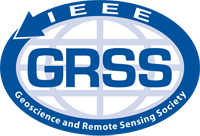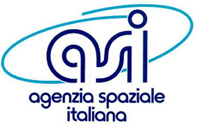HD-04: From SAR Interferometry to 3D/4D Tomography: basics and applications
Fabrizio Lombardini and Matthias Weiss
Sunday, July 26
08:30 - 12:30
Abstract:
Synthetic aperture radar (SAR) Interferometry allowing generation of topographic maps, accurate localization of ground scatterers, and monitoring of possible displacements to a mm/year order, is one of the techniques that have most pushed the applications of SAR to a wide range of scientific, institutional and commercial areas, and it has provided significant returns in particular in terms of improvements in the risk monitoring. SAR images relative to a same scene and suitable for interferometric processing are today available for most of the Earth, and their number is exponentially growing. Archives associated to SAR spaceborne sensors are filled by data collected with time and observation angle diversity (multipass-multibaseline data); moreover, current system trends in the SAR field involve clusters of cooperative formation-flying satellites with capability of multiple simultaneous acquisitions (bistatic and multistatic tandem SAR systems), airborne systems with multibaseline acquisition capability in a single pass are also available, and unmanned air vehicles with capability of differential monitoring of rapid phenomena are being experimented. In parallel, developments are underway of processing techniques, evolutions of the powerful SAR Interferometry, aimed at fully exploiting the information lying in such huge amount of multipass-multibaseline data, to produce new and/or extended measuring functionalities. The tutorial will cover aspects spanning from basics of SAR Interferometry and Differential Interferometry for accurate topographic and deformation measurements, that have dramatically accelerated the SAR application to natural hazards, to the recent developments, framed in the context of Tomographic SAR Imaging, which play an important role in the development of next generation of SAR products and will enhance the application spectrum of SAR systems in Earth observation, with particular focus on the analysis of complex scenarios such as urban and forest areas. In particular processing methods will be treated that, in the emerged framework of coherent SAR data combination at the complex (amplitude and phase) value level, differently from phase-only Interferometry, allow improved or novel imaging and differential monitoring capabilities, in terms of accuracy and unambiguous interpretation of the measurements. After overviewing the basic concepts of SAR Interferometry, discussing most important advanced multi-acquisition techniques with respect to the specific application, the following Tomography techniques will be discussed in detail: 1) 3D multibaseline Tomography, which allows profiling of the scattering distribution also along the elevation direction for unambiguous extraction of physical and geometrical parameters in geophysical structures with vertical stratification sensed by low frequency SARs, as well as separating scatterers in layover over vertical man-made structures with high frequency SAR sensors; and 2) multipass-multibaseline ""4D"" (3D+velocity) ""Differential Tomography"" of multiple layover scatterers with slow deformation motions. The latter technique is recent and represents a very promising multidimensional imaging scheme crossing the bridge between Differential Interferometry and Multibaseline Tomography. In particular, basic concepts, signal models and processing methods of 3D/4D Tomographic SAR Imaging will be described in the array processing i.e. spatial spectral estimation framework, Fourier based, and of super-resolution kind (adaptive, a priori information-based, and model-based). A number of experimental results obtained with real data, multibaseline single-pass and multipass airborne, and multipass spaceborne, in X-, C-, L-, and P-band (AER-II, E-SAR, ERS-1/2, COSMO-SkyMed, TerraSAR-X), over infrastructure, urban, and forest areas, will be presented to show important current application achievements of these emerging techniques in real cases, and recent new trends in the area discussed. Among these, the compressive sensing i.e. regularized sparse scene inversion framework will be also specifically treated, with reference to the Tomographic application. A special focus will hereby be the significant super-resolution capability of this new technique.
A general basic knowledge of radar, the SAR Interferometry principle, and standard signal processing is useful for fruitfully attending the tutorial.
Biography:
Fabrizio Lombardini (IEEE M'93-SM'03) received the Italian Laurea degree (with honors) in electronic engineering and the PhD degree in telecommunication engineering from the University of Pisa, Italy, in 1993 and 1997, respectively. He was then granted by the EU a Marie Curie Fellowship of the Training and Mobility of Researchers (TMR) Program, which he spent as Postdoctoral Researcher at the Department of Electronic and Electrical Engineering of University College London, U.K., from 1998 to 1999. Then, he joined the Department of Information Engineering of University of Pisa, where he currently holds the position of Assistant Professor. Since 2011 he is also Consultant at the National Laboratory of Radar and Surveillance Systems of the Italian National Interuniversity Consortium for Telecommunications (CNIT-RaSS), and in 2014 he obtained the national scientific Habilitation of Associate Professor in Telecommunications. He has given lectures at universities and institutions in Italy and abroad, has organized and chaired 18 special sessions on Synthetic Aperture Radar (SAR) multibaseline/multichannel interferometry, coherent data combination, and three-/multi-dimensional techniques at international conferences (including IEEE IGARSS 2005, IGARSS 2007, IGARSS 2008, IGARSS 2009, IGARSS 2010, IGARSS 2012, IGARSS 2013, and IGARSS 2014), has served as Editor of the EURASIP Journal of Applied Signal Processing (JASP) special issue on "Advances in Interferometric SAR Processing", and has been lecturer or co-lecturer of 7 tutorials on SAR tomography and multidimensional SAR imaging at EUSAR 2008, IEEE RadarCon09, IEEE IGARSS 2010, IGARSS 2011, IGARSS 2012, IGARSS 2013, and IGARSS 2014. Dr. Lombardini's general interests are in the areas of statistical signal processing, estimation and detection, super-resolution spectral analysis, array processing, and performance bounds evaluation, with application to radar systems and SAR environmental remote sensing. He has authored or co-authored more than 130 papers (peer-review journals and proceedings of international conferences) on these subjects. In particular, his research interests include multisensor data fusion and radar detection in non-Gaussian clutter, multibaseline and multifrequency interferometric SAR algorithms and systems, both cross- and along-track, 3D SAR tomography, and differential SAR interferometry. He has originated the new interferometric mode of differential SAR tomography (4D SAR imaging), and has recently engaged research on coherent localization in radio frequency identification (RFID) systems.
Matthias Weiss received the Dipl.-Ing. degree in electronic engineering from the Technical University of Braunschweig in 1993 and the Ph.D. degree from the University of Kiel in 1999. Since 2001 he has been with Fraunhofer Institute for High Frequency Physic and Radar Technique, Wachtberg, Germany, where he is currently a Senior Researcher working in the area of distributed radar networks and compressive sensing. Dr. Weiss has been visiting scientist at the Institute for Electromagnetic Sensing of the Environment (IREA) of the Italian National Research Council, Naples. Since 2009 Dr. Weiss is organizing and likewise lecturing at the International Summer School on Radar/SAR of the Fraunhofer Institute, he has been also organized and chaired sessions dedicated to SAR/SAS processing in several international conferences. He has authored more than forty of papers (peer-review journals and proceedings of international conferences); in 2010 and 2012 served as Editor of the special issue dedicated to EUSAR 2008 of the IET Radar, Sonar & Navigation and of the IEEE Transaction on Geoscience and Remote Sensing (TGARS) dedicated to EUSAR 2010 and 2012, respectively. He organized several NATO Specialist Meetings, Symposia, and Lecture Series, where he also gives lectures. Since 2006 he is the EUSAR Executive, and he has been the technical chair of EUSAR 2010 and EUSAR 2012. In 2013 and 2013 Dr. Weiss organized the International Workshop on Compressed Sensing applied to Radar (CoSeRa) in Bonn, Germany, the NATO Specialist Meeting SET-213 on "Compressed Sensing for Radar/SAR and EO/IR imaging" 2014, and for CoSeRa 2015, Pisa, he serves as a technical chair. His general interests are in the areas of signal processing, estimation and detection, super-resolution spectral analysis, array processing, and compressive sensing techniques, with application to radar systems and distributed sensor networks.




